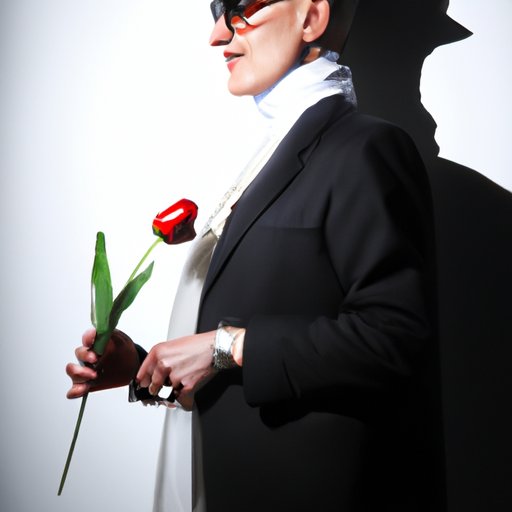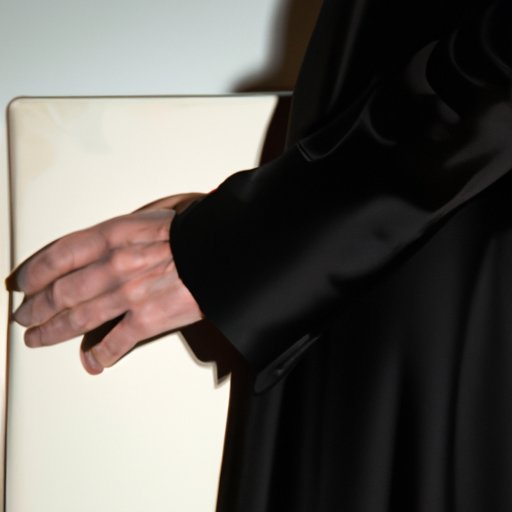I. Introduction
Funerals are often a time of mourning and paying respects to the deceased, and one of the most common funeral customs is wearing black. But have you ever wondered why black is the preferred color for funerals? In this article, we will explore the history, psychology, and cultural significance of wearing black to funerals. Whether you are attending a funeral, planning your own, or simply curious about funeral customs, this article is for you.
II. A cultural tradition: Understanding the history behind wearing black to funerals
The tradition of wearing black to funerals has a long history in various cultures around the world. In Western cultures, the tradition can be traced back to the Roman Empire, where mourners wore dark togas to symbolize their grief. In medieval Europe, black clothing was also associated with mourning, and it became the formal color of mourning in Victorian England.
Today, wearing black to funerals is still a common practice in many countries, including the United States, United Kingdom, and Australia. In some cultures, like China and Korea, mourning clothes are traditionally white. In Hindu culture, mourners typically wear simple white clothing as a symbol of purity and detachment from material possessions.
Despite regional differences, black remains the most common color for funeral attire worldwide. This is partly due to its association with formality, somberness, and respect.
III. The psychology behind wearing black to funerals: Exploring the emotional significance
Black has long been associated with death and mourning, likely due to its connection with darkness and the absence of light. From a psychological perspective, black is also believed to represent a range of emotions associated with grief, including sadness, solemnity, and seriousness.
Wearing black can serve as a visual reminder of the solemnity of the occasion, and it can also help to unify and show solidarity among mourners. Additionally, dressing in black may help mourners to better connect with their feelings of grief and sadness.

IV. Breaking the taboo: The emergence of alternative funeral attire
In recent years, there has been a shift in attitudes towards funeral attire. As people seek to personalize and modernize funeral services, many have begun to question the traditional dress code of somber black clothing. This has led to the emergence of alternative funeral attire, such as colorful clothing or clothing that reflects the interests and personality of the deceased.
While some may still view non-black funeral attire as taboo, others see it as a way to celebrate the life and personality of the deceased rather than just mourning their loss. Ultimately, the choice of funeral attire is a personal one and should reflect the individual beliefs and values of the mourner.
V. Spiritual beliefs and mourning practices: Why black is still the preferred funeral color
In many religious and cultural traditions, black clothing is still the preferred attire for funerals. Some spiritual beliefs associate black with death and mourning, while others suggest it as a way to show respect for the deceased and their family.
For some, the choice to wear black to a funeral may also be influenced by personal beliefs and values. They may feel that it is a way to honor the deceased and show respect for the solemnity of the occasion.
VI. Grieving in a modern era: The influence of social media on funeral fashion
In the age of social media, funeral fashion has become a topic of discussion among mourners and the wider public. Widely shared images of celebrities and public figures attending funerals in non-traditional attire have also challenged traditional dress codes.
The rise of online communities discussing funeral fashion has also served to break down taboos and encourage more personalization and creativity in funeral attire. However, it’s important to remember that funeral fashion is ultimately a personal choice and should reflect the beliefs and values of the mourner.
VII. From mourning to celebration: How different cultures approach funeral dress codes
Despite the prevalence of black funeral attire worldwide, different cultures have unique customs and symbols associated with mourning. In Japan, mourning attire is traditionally black and white, but it also includes a mourning armband or badge. In Ghana, traditional funeral attire is brightly colored and patterned, signifying a celebration of the deceased’s life.
While black remains a common funeral color across cultures, it’s important to recognize and appreciate the diverse ways in which people express their grief and honor the deceased.
VIII. Conclusion
Funeral attire is a deeply personal choice that reflects the individual beliefs and values of the mourner. While black remains the preferred funeral color in many cultures, there is growing acceptance for alternative funeral attire that can celebrate the life and personality of the deceased.
Whether you choose to wear black or something more colorful, the most important thing is to honor the deceased and show respect for their life and legacy.
Advice for the target audience: When attending a funeral, consider the customs and beliefs of the deceased and their family, as well as your own personal beliefs and values. Dress in a way that feels respectful and appropriate to you. Remember that funeral attire is ultimately a personal choice, and there is no right or wrong way to express your grief.
